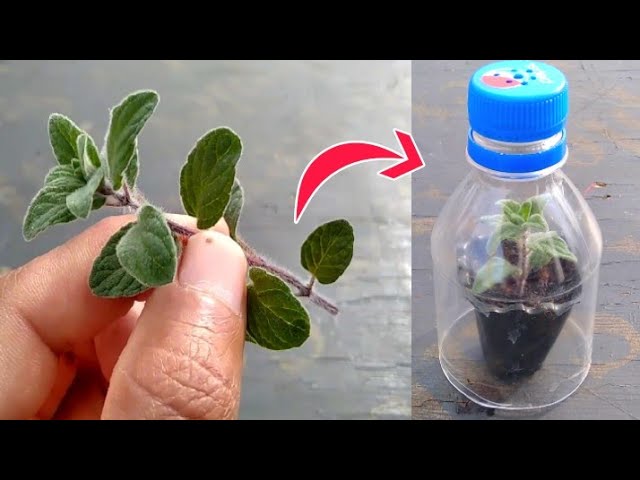Rosemary & Thyme: Cultivating Your Own Herb Garden

Table of Contents
Planning Your Herb Garden
Before you even think about planting, careful planning is crucial for a successful herb garden. This includes choosing the perfect location, selecting the right varieties, and preparing the soil.
Choosing the Right Location
Rosemary and thyme are sun-loving herbs that need plenty of sunlight to thrive. Consider these factors when selecting a spot for your herb garden:
- South-facing location: Maximize sun exposure, especially important for these Mediterranean herbs.
- Well-drained soil: Avoid waterlogged conditions, which can lead to root rot. Amend heavy clay soils with compost to improve drainage. A well-drained herb garden is key to success.
- Sufficient space for mature plants: Allow ample room for the plants to grow to their full size, preventing overcrowding.
- Wind protection: A sheltered location will protect delicate young plants from strong winds. Consider planting near a wall or fence.
Careful planning for your herb garden will improve its chances of success.
Selecting Your Rosemary and Thyme Varieties
Numerous rosemary and thyme varieties offer diverse flavors and growth habits. Choose varieties that suit your needs and space.
- Rosemary varieties: Upright rosemary (e.g., 'Tuscan Blue') grows tall and is ideal for larger gardens. Prostrate rosemary (e.g., 'Prostratus') spreads horizontally, making it perfect for borders or containers.
- Thyme varieties: Lemon thyme offers a zesty citrus fragrance, while creeping thyme forms a low-growing mat, ideal for ground cover. Consider the unique characteristics of each rosemary and thyme variety when selecting your plants. You can find a wide selection from reputable plant nurseries or seed suppliers online.
Consider exploring different rosemary and thyme varieties to find your favorites for your herb garden plants.
Soil Preparation
Healthy soil is fundamental to a thriving herb garden. Rosemary and thyme prefer fertile, well-drained soil.
- Soil testing: Conduct a soil test to determine its pH and nutrient levels. Amend the soil as needed to achieve a neutral to slightly alkaline pH (6.0-7.5).
- Amending with compost or other organic matter: Improves soil structure, drainage, and fertility. Adding compost is a great way to enhance your herb garden soil.
- Avoiding waterlogged conditions: Ensure good drainage to prevent root rot. Raised beds or containers are excellent options for poorly draining soils.
Preparing the soil correctly is a vital step in preparing soil for herbs and ensures optimal plant growth in your organic herb gardening endeavors.
Planting and Growing Your Herb Garden
Once you've planned your herb garden, it's time to get your hands dirty!
Starting from Seed or Transplant
You can start your rosemary and thyme from seed or by purchasing transplants.
- Starting from seed: Sow seeds indoors 6-8 weeks before the last frost. Direct sowing outdoors is possible in warmer climates after the last frost. Ensure proper seed sowing depth and spacing.
- Transplanting: Transplant seedlings outdoors after the last frost, ensuring careful handling to avoid damaging roots. Hardening off seedlings gradually prepares them for outdoor conditions.
Growing herbs from seed allows for a wider selection of varieties, whereas herb garden planting using transplants provides a head start. Herb transplanting requires careful handling to avoid damaging roots.
Watering and Fertilizing
Proper watering and fertilization are crucial for healthy growth.
- Watering frequency: Water deeply but infrequently, allowing the soil to dry slightly between waterings. Avoid overwatering, which can lead to root rot. The watering frequency will depend on weather conditions.
- Fertilizing: Rosemary and thyme are relatively low-feeders. Use a balanced, organic fertilizer sparingly, especially in well-amended soil. Too much fertilizer is not good for your herbs.
Proper herb garden care includes mindful watering and light fertilizing.
Pest and Disease Control
While generally hardy, rosemary and thyme can be susceptible to pests and diseases.
- Identifying common pests: Watch out for aphids, spider mites, and whiteflies.
- Preventative measures: Good air circulation helps prevent fungal diseases. Space plants appropriately for sufficient air circulation.
- Organic pest control solutions: Use insecticidal soap or neem oil to control pests organically. Avoid harsh chemicals, opting for organic herb pest control methods.
Herb garden pests and disease control requires vigilance and the use of appropriate organic methods.
Harvesting and Preserving Your Herb Garden Bounty
Harvesting and preserving your herbs ensures you can enjoy their flavor throughout the year.
Harvesting Techniques
Harvesting at the right time maximizes flavor and promotes continued growth.
- Best time to harvest: Harvest in the morning after the dew has dried.
- Proper cutting methods: Cut stems just above a leaf node to encourage bushier growth. This is key for harvesting herbs and promoting future growth.
- Storing fresh herbs: Store fresh herbs in a refrigerator in a damp paper towel.
Harvesting herbs correctly is essential for maintaining a productive herb garden.
Preservation Methods
Preserve your excess herbs to enjoy them year-round.
- Drying methods: Air drying is simple, while oven drying is faster but requires careful attention to prevent burning.
- Freezing techniques: Chop herbs and freeze them in ice cube trays with a little water or oil.
- Oil infusion instructions: Infuse herbs in olive oil to create flavorful cooking oils.
Learning different herb preservation methods ensures that your herb garden bounty doesn't go to waste.
Conclusion
Cultivating your own rosemary and thyme herb garden is a rewarding experience. By following these steps – planning your herb garden, planting and growing your herbs, and harvesting and preserving your bounty – you can enjoy fresh, flavorful herbs all year long. Start your own herb garden this season and savor the delightful aroma and taste of homegrown rosemary and thyme. Enjoy the ease and rewards of starting an herb garden and having your own home herb garden, complete with freshly-picked rosemary and thyme!

Featured Posts
-
 Building A Good Life Strategies For Personal Growth And Well Being
May 31, 2025
Building A Good Life Strategies For Personal Growth And Well Being
May 31, 2025 -
 Your Daily Horoscope For May 27 2025 Christine Haas
May 31, 2025
Your Daily Horoscope For May 27 2025 Christine Haas
May 31, 2025 -
 Ita Airways And Giro D Italia 2025 A Winning Partnership
May 31, 2025
Ita Airways And Giro D Italia 2025 A Winning Partnership
May 31, 2025 -
 Are New Covid 19 Variants Ba 1 And Lf 7 A Threat In India Insacog Data Analysis
May 31, 2025
Are New Covid 19 Variants Ba 1 And Lf 7 A Threat In India Insacog Data Analysis
May 31, 2025 -
 Etude De Cas Ingenierie Castor Testee En Drome
May 31, 2025
Etude De Cas Ingenierie Castor Testee En Drome
May 31, 2025
